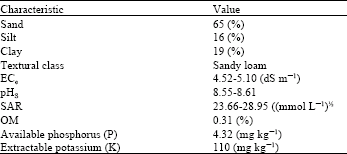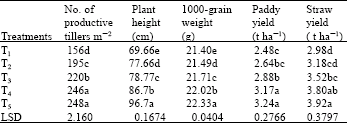Research Article
Response of Rice Advance Line PB-95 to Potassium Application in Saline-sodic Soil
Soil Salinity Research Institute, Pindi Bhattian, Pakistan
Muhammad Sarfraz
Soil Salinity Research Institute, Pindi Bhattian, Pakistan
Mudassar Hafeez
University of Agriculture, Faisalabad, Pakistan












